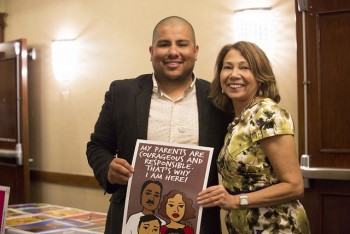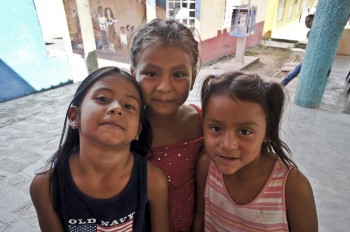by Carmen R. Lugo-Lugo and Cheris Brewer Current
Cuba y Puerto Rico son
(Cuba and Puerto Rico are)
De un pájaro las dos alas,
(Two birds of a feather)
Reciben flores y balas
(They receive flowers and bullets)
Sobre el mismo corazón…
(Over the same heart…)
—From Mi libro de Cuba by Lola Rodríguez de Tió
One Bird, Two Wings
Sometimes attributed to Cuban revolutionary José Martí, the verses by Puerto Rican revolutionary Lola Rodríguez de Tió were first published in 1893, while she was exiled in Cuba. Martí and Rodríguez de Tió became good friends and avid advocates for the independence of their own and each other’s country, as Cuba and Puerto Rico remained the last bastions of Spain’s Empire in the Caribbean. The verses were a testimony of the similar histories the two islands developed under four centuries of Spanish rule. They can also be seen as a chilling presage of what was to come after the U.S. won the Spanish American War in 1898 and became a consistent presence in the future of both countries, as U.S. decisions and U.S. policies have affected the way Cubans and Puerto Ricans live their lives on both their respective islands and the US mainland as well.
The islands were forced into different routes during the 20th century with the Platt Amendment (1901) steering Cuba in one direction (i.e., eventual independence), and the Foraker Act (1900) and Jones Act (1917) gearing Puerto Rico in another (i.e., an entrenched colonial status). Later, when Puerto Rico became a Commonwealth of the U.S. in 1952 and Fidel Castro assumed power in 1959, this bifurcation seemed to be irreversible. The effects of U.S. policies toward Puerto Rico and Cuba have been critical in shaping the positions that both islands occupy globally, and in the living conditions of Cubans and Puerto Ricans on the mainland.
This essay presents a brief comparative sketch of two distinctive immigrating and incoming Caribbean groups resulting from two specific structural programs: the Cuban Refugee Program (CRP) targeting Cubans in the U.S.; and Operation Bootstrap (OB) involving Puerto Ricans on the island. Both programs had their genesis in the mid-twentieth century, at a moment when the U.S. was attempting to re-vamp its racial politics in response to both domestic and international pressures. Yet, it is noteworthy that both CRP and OB were operational before the passage of the Immigration and Nationality Act of 1965 which ended explicit race based preferences in entrants.
Thus Puerto Rican incomers and Cuban immigrants of the 1950s and 1960s are a precursor to the increasingly diverse group of immigrants who were to follow. Movement from Latin American and the Caribbean to the US contains a peculiar history shaped by individual relationships between countries of origin and the US. Immigrants from countries with closer political, economic, and social ties to the US were (and are) granted advantages in entrance, settlement, and employment that are unavailable to immigrants from countries who do not share the same intimacy with the US. This is clear when you compare Cubans with other political immigrants of the period—Haitians and Dominicans, for instance—who, because of racial and political reasons were not granted refugee status. This essay focuses on two relatively privileged groups of Latino immigrants: Puerto Ricans who entered with citizenship status, and Cubans who were granted legal status, provided financial assistance, and structural assimilation. Tracing the reception of these two groups illustrates the ways in which the U.S. government eased and aided the process of migration for some, while it outright neglected other newcomers.
Bootstrapping the Island
As an economic policy and as a development initiative, OB was not a U.S. policy per se, but rather, the effort of Puerto Rican leaders, who sought to develop Puerto Rico economically (Maldonado, 1997). The program was funded, almost entirely, by the island’s government. However, U.S. involvement was at the heart of its conception and implementation, for the companies targeted by the program were exclusively U.S. companies. U.S. policy was also at the heart of the program by way of specific tax exemptions that these companies would enjoy, as “Puerto Rico had been exempted from U.S. taxes since 1900” (Maldonado, 1997: 46). Those exemptions were the core of the program, so OB was possible, fundamentally, because of already existing U.S. policy. In addition, the massive movement of Puerto Ricans to the mainland that ensued after OB was also only possible, again, because of U.S. policy (in this case, policies ruling citizenship and territories).
Using an “industrialization by invitation” approach (Dietz, 1986; Whalen, 2005),
Operación Manos a la Obra (as it is known in Spanish) began in the 1940s, and had among its main objectives to eliminate extreme poverty on the island, and to develop the island economically (Morales-Carrión, 1983). Initially, the project included federal tax incentives and exemptions to entice American businesses with cheap and abundant labor. OB turned into an export-oriented form of absentee capitalism that overhauled the economy in Puerto Rico in unprecedented ways. By the 1950s the island had largely left its agricultural past behind, for as James Dietz (1986) tells us, agriculture came to be regarded as an obstacle to progress.
OB prompted a massive exodus of Puerto Ricans to the mainland US that has literally divided the Puerto Rican population in half, and has prompted poet Nicolasa Mohr to thoughtfully proclaim that “Puerto Ricans are no longer an island people” (in Rodríguez, 1991). The movement of Puerto Ricans alleviated the large-scale unemployment produced by the sudden shift from an agricultural to an industrial economy. The mainland Puerto Rican population went from 53,000 in 1930 (before OB), to 1.5 million in1964, roughly 20 years after OB began (Briggs, 2002). Although the set of initiatives, policies, and practices that came to be known as Operation Bootstrap did not institute or formally encourage island to mainland movement, we are suggesting (as have others before us—see, e.g., Briggs 2002; Dietz 1986; Maldonado 1997; and Whalen 2005, etc.) that Operation Bootstrap created a de facto form of movement to the U.S. by “pushing” migrants northward.
When the U.S. is Pulling the Bootstrap
The post-1959 migration of Cubans was part of an immigration continuum that had brought Cubans to Florida whenever political or economic strife hit the island (Mirabal, 2003; Poyo, 1989). Given this history, the U.S. became a natural refuge for former supporters of Batista and other Cubans who quickly became politically and financially disillusioned with the revolution, but discerning why the U.S. chose to accept over 650,000 refugees by 1977 is a more complicated challenge (Whorton, 1997). The acceptance of Cubans, first as immigrants and then as refuges, marks an anomaly in US immigration policy, as they arrived during an era of restrictive immigration (1924-1965).
Accepting Cuban refugees was merely one aspect of the U.S.’s developing policies directed at incoming exiles. Early on, many Cubans leaving the island managed to take money and other forms of capital with them and were able to support themselves –if only temporarily– in their exile. The restrictions Castro imposed on what Cubans could take with them became increasingly stringent over time as concern grew that assets in the forms of cash and jewelry were being sent northward. Eventually luggage was limited to a change or two of clothing.
As Cubans began entering the U.S. early in 1959, private agencies and local church groups offered aid to impoverished refugees. Federal aid increased greatly in 1961 with the creation of the Cuban Refugee Program, providing the needed resources for the programs many aid-based goals. The CRP, administered by the Department of Health, Education and Welfare (HEW), provided funds for resettlement, and “monthly relief checks, health services, job training, adult educational opportunities, and surplus food distribution (canned meat, powdered eggs and milk, cheese, and oatmeal, among other food products)” (García, 1996).
Based on number of dependents, place of residence, and employment status, CRP staff calculated a monthly financial benefit for deserving refugees – primarily the unemployed – and granted refugees a maximum of $60 a month for a single person and $100 for a family (Voorhees, 1961). These payments were substantially more than the welfare payments available to U.S. citizens (including Puerto Ricans). The CRP also provided additional assistance, including medical insurance, assistance with employment readjustment, and college scholarships. This comprehensive program ensured that Cuban refugees were provided with structural assistance that extended beyond the stopgap needs of early exile.
Final Thoughts: Of Cubans, Puerto Ricans, Republicans, and Latinos
The unequal power relations that typify U.S.-Latin American exchanges mark the admittance, treatment and integration of Latin American immigrants, as all migrants from the region have been subject to the whims of the U.S.’s shifting relations with Latin America. Similarly, the complex histories that individual nations share with the U.S. have dictated the response to immigration policy and immigrants (Taft, et al, 1979 ). This in part explains that although Puerto Ricans and Cubans are all categorized as “Hispanic” in the eyes of the U.S. government or Latinos in the U.S. popular imagination, for instance, specific historical, political and perceived racial differences have produced great disparity in U.S. policy and reception of immigrants or incomers from the country and territory respectively.
This discrepancy becomes patently obvious when one compares the reception of Cuban refugees to that of Puerto Ricans workers during the mid-twentieth century. On the one hand, during the Puerto Rican movement to the U.S., the U.S. government benefited from the cheap labor that ended up manning its factories and processing plants. It was assumed that Puerto Ricans, who were U.S. citizens after all, could access welfare if needed—yet the racialized welfare system discouraged if not outright barred people of color from accessing services (DeParle, 2004). Meanwhile, unlike Cuban refugees from the same period, Puerto Ricans did not receive a hero’s welcome, or assistance to find a place to stay, or to learn English. They were given no free vocational training, or medical services. In sum, Puerto Ricans were not presented with an aid package tailored to their needs. As citizens, they were assumed to have access to the U.S. government resources, when the reality seemed that they were here only to fulfill the needs of an economic system that thrived on cheap labor. The massive migration turned out to be a “win-win” for both governments (US’ and Puerto Rico’s), while it became a “lose-lose” for Puerto Ricans, including Puerto Ricans in the U.S., who ended up at the bottom of the economic ladder.
On the other hand, the US government not only allowed Cubans entry, but it also provided direct assistance that exceeded any welfare program available to its own citizens, including Puerto Ricans. Some of the motives behind this benevolence remain unclear; what is clear is that the Cold War and anti-communist rhetoric shaped governmental discussions of Cuban immigration; ensuring the well-being and success of people fleeing communism held important ideological value. The direct assistance that Cubans received was, indeed, helpful in some form, as they still have the highest net worth of any U.S. Latino group. Puerto Ricans, on the other hand, continue to lag behind, and are experienced as a problem group, one immersed in poverty—and racialized as non-White. Regardless of the historical, social, and racial similarities shared by Cuba and Puerto Rico pre-1898 (the two birds of a feather), an act of American exceptionalism elevated (and perhaps continues to elevate) the status of Cubans, while Puerto Ricans and other Latino/as remain(ed) marginalized. This unilateral decision predisposed Puerto Ricans to a different treatment by mainstream U.S. culture, and hence, a different future from that of Cubans.
Over half a century into that future, the 2016 presidential election campaign has produced (thus far) two Republican hopefuls of Cuban descent, while not one Puerto Rican has ever made a bid for the presidency (on either party). Something to note here is that the candidates in question are both the offspring of Cubans who migrated to the U.S. before Castro took office, meaning, they are not CRP babies. This fact brings us to a crucial, final argument: the CRP seems to have “lifted the boats” of Cubans as a group, even those who did not participate in it (and perhaps even those who came after the program was terminated). This point is important, for the net effect of the CRP extends beyond the assistance granted to individuals, as the program collectively elevated the economic and social status of Cubans. The CRP argued that these heralded newcomers were capable of accessing the American Dream and political self-determination (as it was assumed that the future leaders of Cuba were temporary sojourners, who would return to the island eventually and take control). Puerto Ricans were pushed to the margins as they were denied structural assistance and viewed as political and economic dependents, creating a long-lasting, major chasm between both groups.
But now the chasm seems to be closing, and Republican candidates notwithstanding, second and third generation Cuban Americans are shifting politically, presumably joining Puerto Ricans and other Latinos in less conservative spaces (Fisher, (2015). Thus, regardless of their bifurcated histories, and their still dissimilar class status, Puerto Ricans and Cubans in the U.S. seem to be finally converging not only geographically, but in their ideals and aspirations as well. There is also the collective imagination of Americans who sees both groups as part of that collective known as Latinos/as, and whether that is a good thing or not, is a question for another essay.
References:
Briggs, Laura. 2002. Reproducing Empire: Race, Sex, Science, and U.S. Imperialism in Puerto Rico. Berkeley: University of California Press.
Boswell, Thomas and James Curtis. 1984. The Cuban American Experience: Culture,
Images and Perspectives. Totowa, New Jersey: Rowman & Allaheld Publishers.
DeParle, Jason. 2004. American Dream: Three Women, Ten Kids, and a Nation’s Drive
to End Welfare. Penguin Books: New York.
Dietz, James L. 2003. Puerto Rico: Negotiating Development and Change. Boulder:
Lynne Rienner Publishers.
Fisher, Marc. 2015. “Cuban Americans’ Shifting Identity, and Political Views Divides
Key Block.” The Washington Post. June 12. http://www.washingtonpost.com/
politics/as-time-passes-a-cuban-identity-fades-to-an-american-one/2015/04/
12/83d3346a-dfd0-11e4-a1b8-2ed88bc190d2_story.html.
García, M.C. 1996. Havana USA: Cuban Exiles and Cuban Americans in South Florida, 1959-1994. Berkley: University of California Press.
Maldonado, A.W. 1997. Teodoro Moscoso and Puerto Rico’s Operation Bootstrap.
Gainesville: University Press of Florida.
Masud-Piloto, F.R. 1996. From Welcomed Exiles to Illegal Immigrants: Cuban Migration to the US, 1959-1995. Lanham, Maryland: Rowman & Littlefield Publishers, Inc.
Mirabal, N. R. 2003.“‘Ser de Aquí’: Beyond the Cuban Exile Model.” Latino Studies vol. 1: 366-382.
Morales Carrión, Arturo. 1983. Puerto Rico: A Political and Cultural History. New
York: W. W. Norton and Company.
Poyo, G. 1989. With All, and for the Good of All: The Emergence of Popular Nationalism in the Cuban Communities of the United States, 1848-1898. Durham: Duke University Press.
Rodríguez, Clara E. 1991. Puerto Ricans: Born in the U.S. Boulder: Westview Press.
Taft, J.V., North, D.S.& Ford, D.A. 1979. Refugee Resettlement in the US: Time for a New Focus. Washington DC: New TrasCentury Foundation.
Thomas, J.F. 1963. “US Cuban Refugee Program.” (December) Records of Health, Education, and Welfare, RG 363, Carton 12, File CR 18-1, National Archives II.
Whalen, Carmen Teresa. 2005. “Colonialism, Citizenship and the Making of the Puerto
Rican Diaspora.” In The Puerto Rican Diaspora: Historical Perspectives edited by Carmen Teresa Whalen and Víctor Vázquez-Hernández. Philadelphia: Temple University Press.
Whorton, B. 1997. The Transformation of Refugee Policy: Race, Welfare, and American Political Culture, 1959-1997. PhD Dissertation. Sociology, University of Kansas.
Carmen R. Lugo-Lugo is an Associate Professor in the Department of Critical Culture, Gender, and Race Studies at Washington State University. Her research focuses on Latinos in the US, “the War on Terror,” and the representation of Latinas/os and other minorities in popular culture. Cheris Brewer Current is Associate Professor of Sociology and Social Work
at Walla Walla University’s Wilma Hepker School of Social Work and Sociology. Her research focuses on Cuban Immigration to the U.S., and the intersections of race, class, and gender.

















